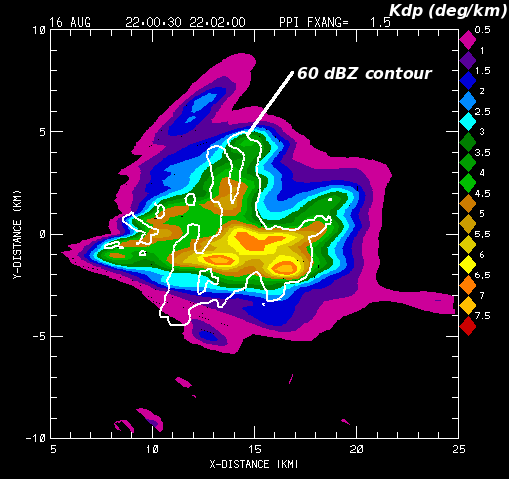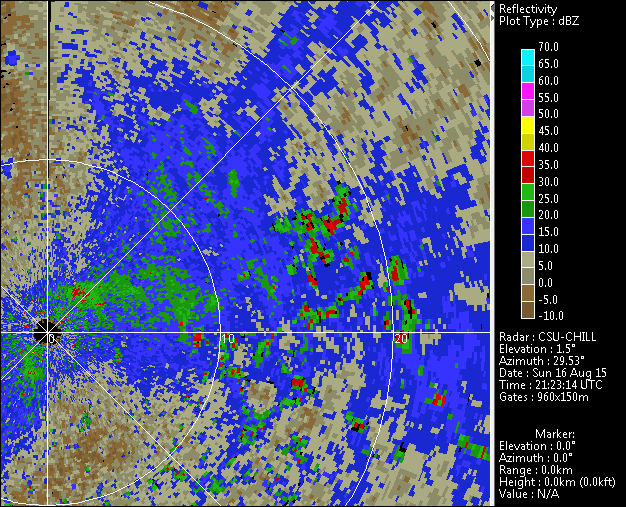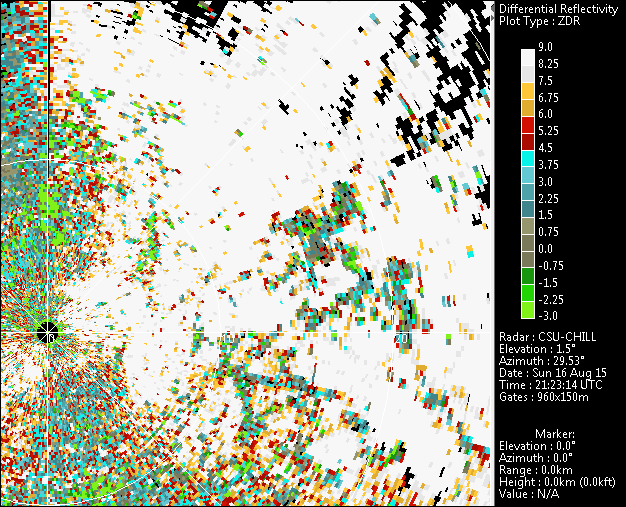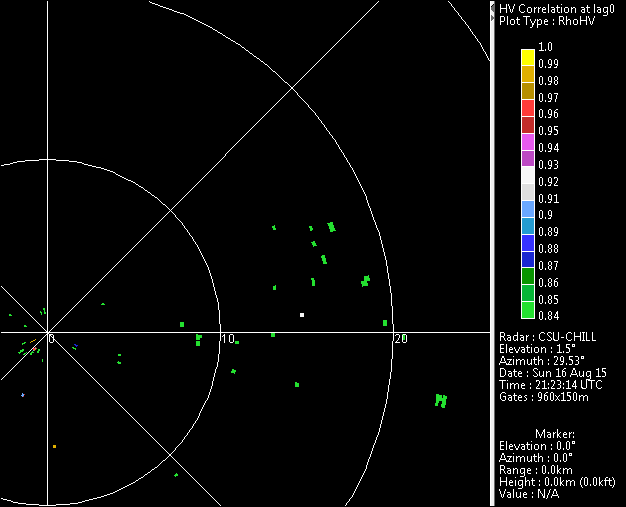DPWX/RhoHV observations in a developing hailstorm: 16 August 2015
Overview
During the afternoon hours of 16 August, an isolated thunderstorm rapidly developed just north of the CSU-CHILL radar site near Greeley, Colorado. As the storm developed, the radar was conducting continuous 360 surveillance scans at an elevation angle of 1.5 degrees and a scan rate of 4 deg / second in dual polarization mode. This scan procedure gave a cycle time of ~ 1 minute and 40 seconds, providing a high time resolution view of the development of hail indications. (Note: On this afternoon data from the CSU-CHILL X-band channel was not available; all of the data shown below was collected at S-band / ~11 cm wavelength.)
Reflectivity loop
The following loop covers the time period from 2121:44 - 2200:09 UTC. The widespread, weak echo pattern that was initially present was primarily due to insects flying in the warm afternoon boundary layer. Rain from the higher-altitude storm begins to descend into the PPI scan surface ~8 km north-northeast of the radar in the third image frame (2126 UTC). Thereafter, the precipitation reflectivities rapidly intensify and horizontally-expand as the storm moves to the east of the radar.
|
|
||
|
Differential reflectivity (Zdr) loop
The following loop shows the differential reflectivity data that corresponds to the reflectivity evolution shown above. The Zdr values are highly positive (> ~ +4 dB) during the pre-storm period. The highly oblate shapes of the insects produce a significantly stronger received signal level at horizontal polarization vs. vertical polarization. Since Zdr is proportional to the H/V received signal strength ratio, the insect-laden boundary echo generally has distinctly positive Zdr values. Large diameter raindrops have equilibrium shapes that are less oblate than typical insect bodies. This causes the Zdr levels to become less positive as raindrops become the predominant scatterer. By frame 14 (~2143 UTC), a well defined region of near 0 dB Zdr becomes apparent in the high reflectivity echo core immediately southeast of the 045 degree azimuth line. These near 0 dB Zdr values imply that the H and V polarization received signal levels are essential equal. The presence of hail tends to reduce Zdr from the positive values associated with oblate raindrops. Hailstone's nearly spherical shapes and quasi-random free-fall tumbling motions both act equalize the average H and V received signal levels (Herzegh and Jameson, BAMS Sept. 1992, p.1365-1374.
|
|
||
|
|
|
||
|



